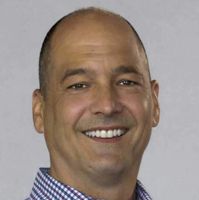A Case Study in Equity Crowdfunding: Cary Breese, CEO of NowRx ( Part 1)

Equity Crowdfunding has matured significantly. In this case study, we get to learn some interesting nuances.
Sramana Mitra: Let’s start at the beginning of your journey. Where are you from? Where were you born and raised? What kind of background did you have?
Cary Breese: I was born in New Jersey. My dad was an engineer. I got interested in engineering from a young age. I was born and raised around New Jersey and Philadelphia. I went to Drexel University for my electrical engineering degree. I’ve always thought of myself, first and foremost, as an engineer.
Sramana Mitra: When did you come out of graduate school?
Cary Breese: I graduated from Drexel University in 1989.
Sramana Mitra: What did you do after that?
Cary Breese: I worked for Lockheed Martin, which started as Raytheon Martin. I was designing radar systems for naval bases. It was a government contract for the US Navy. I did that for about five to six years.
After that, I got interested more in finance and financial engineering. I took a job at an insurance company in Philadelphia. They were recruiting math and science engineering graduates to do data science for their insurance business. I did that for the next five years. I was studying financial engineering and data science for the insurance industry.
Sramana Mitra: How long did you do that?
Cary Breese: I did that until about 1999. I took a job at a smaller company in the insurance industry after that. Ultimately, I wanted to become an entrepreneur back in those days.
Sramana Mitra: Those were the heydays of the internet. While you are doing these jobs, you are watching the internet come about.
Cary Breese: That’s right. That was at the height of the dotcom boom and then their ultimate downfall. Around that time, I was working for a smaller entrepreneurial company in the insurance industry and looking for ways to innovate in that space.
I ended up acquiring part of a larger company that had an asset for sale. I partnered with a friend of mine and put together all the money we had, which wasn’t a lot. We bought the asset from a big Fortune 500 insurance company and spun it out independently. This was a company where we could be in charge of our destiny. That was in 2003.
Sramana Mitra: That was an independent insurance company?
Cary Breese: Yes, this was an independent insurance company and intermediary between large insurance companies and their smaller independent insurance agents. We were the intermediary that pulled it together. This was essentially a wholesale environment. We saw an opportunity to automate. This was, in a sense, software eating the world.
We built a bunch of software technologies to automate various aspects of insurance processing and underwriting. We built our platform to do that on the web. We had a lot of interesting features to streamline coding, underwriting, and claims processing.
My partner and I built that up for about 7 years. We then sold that business for a very nice profit for about 18 times the amount that we paid for.
Sramana Mitra: How long was that whole process?
Cary Breese: That was from 2003 to 2010, so about seven years.
Sramana Mitra: The parent company where your company came from, did they become an investor? How did you finance that business? Give me a few details of that business?
Cary Breese: We negotiated a deal where the selling entity financed the sale price for us. We paid a lump sum upfront, which was about 40% of the purchase price, and the other 60% was paid over the next three years. We did have to dig into our own pockets and put some upfront cash. At that time, it was all the money that we had.
It was an underperforming asset and a money loser for the company. It was a department that they were running, and they were not profitable. We were able to negotiate a low price to take it off their hands. We were excited to do that because we had a vision where we could turn it around and make it profitable.
We were able to acquire the asset for a very low price. We also had some financing from this other entity. We made a profit in our first year and were profitable until we sold it to a large regional player.
This segment is a part in the series : A Case Study in Equity Crowdfunding
. Cary Breese, CEO of NowRx ( Part 1)
. Cary Breese, CEO of NowRx (Part 2)
. Cary Breese, CEO of NowRx (Part 3)
. Cary Breese, CEO of NowRx (Part 4)
. Cary Breese, CEO of NowRx (Part 5)
. Cary Breese, CEO of NowRx (Part 6)
Featured Videos
Can 1M/1M Help Me Raise Money?
How Does 1M/1M Democratize Entrepreneurship Education?
How Does 1M/1M Democratize Management Consulting?
When Is The Right Time To Join 1M/1M?
Can 1M/1M Help Me With Business Development?
Can 1M/1M Help Me With Market Sizing?
Can 1M/1M Help Me Validate My Product?
Will I Have Private 1-on-1 Sessions In 1M/1M?
How Does 1M/1M Help Entrepreneurs Connect With Silicon Valley?
Mentoring or Consulting?
Why Does 1M/1M Charge $1000 a Year?
Why Does 1M/1M Partner With Local Organizations?
Why Don\’t Mentoring Networks Work?
Why Is It Important To Study With 1M/1M Now?
Dan Stewart Story
Vikrant Mathur Story
